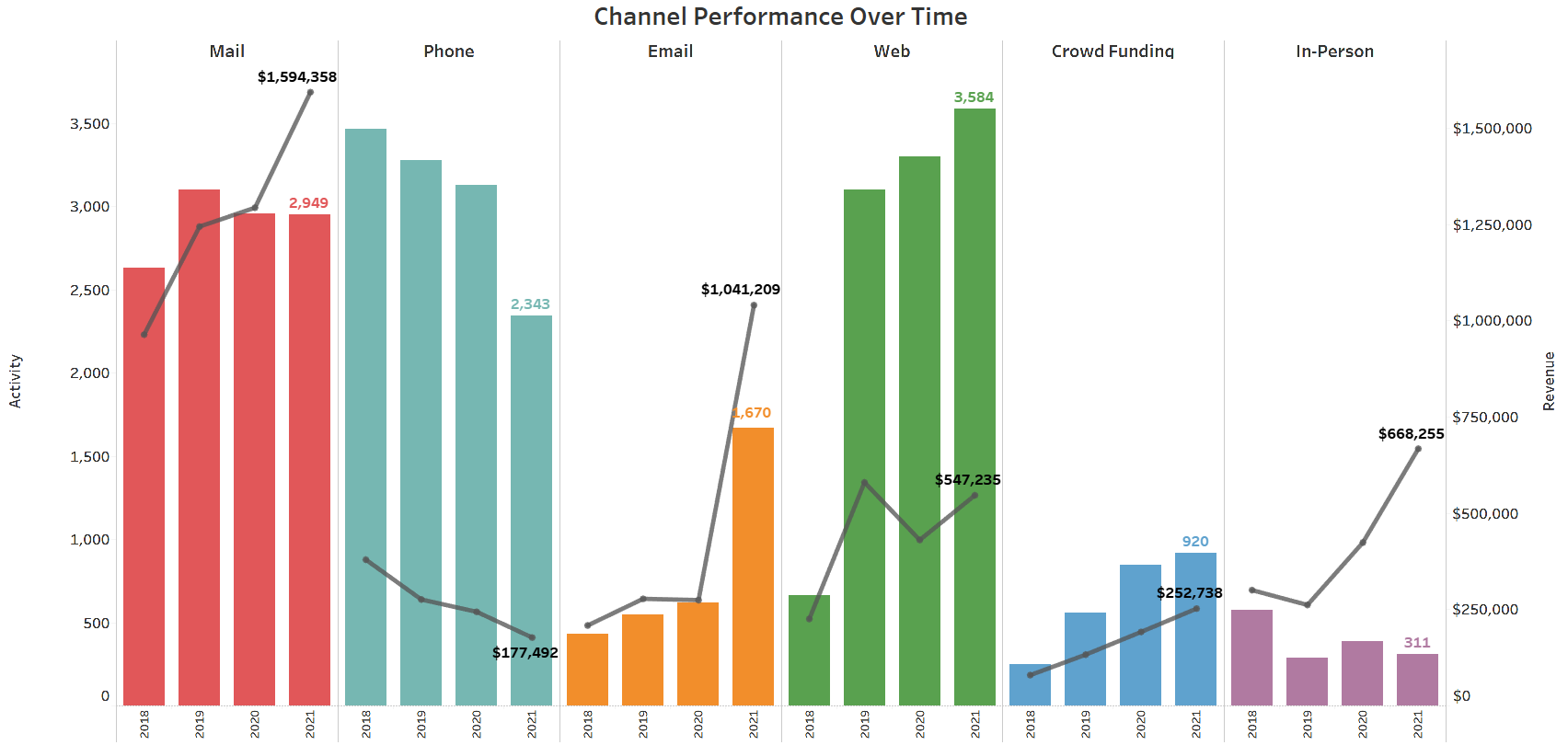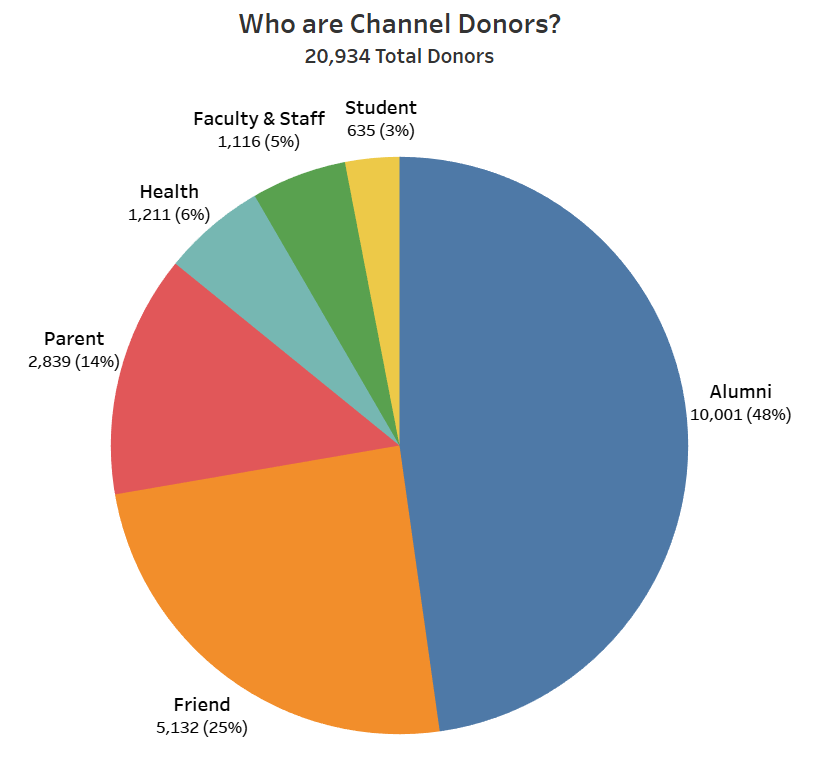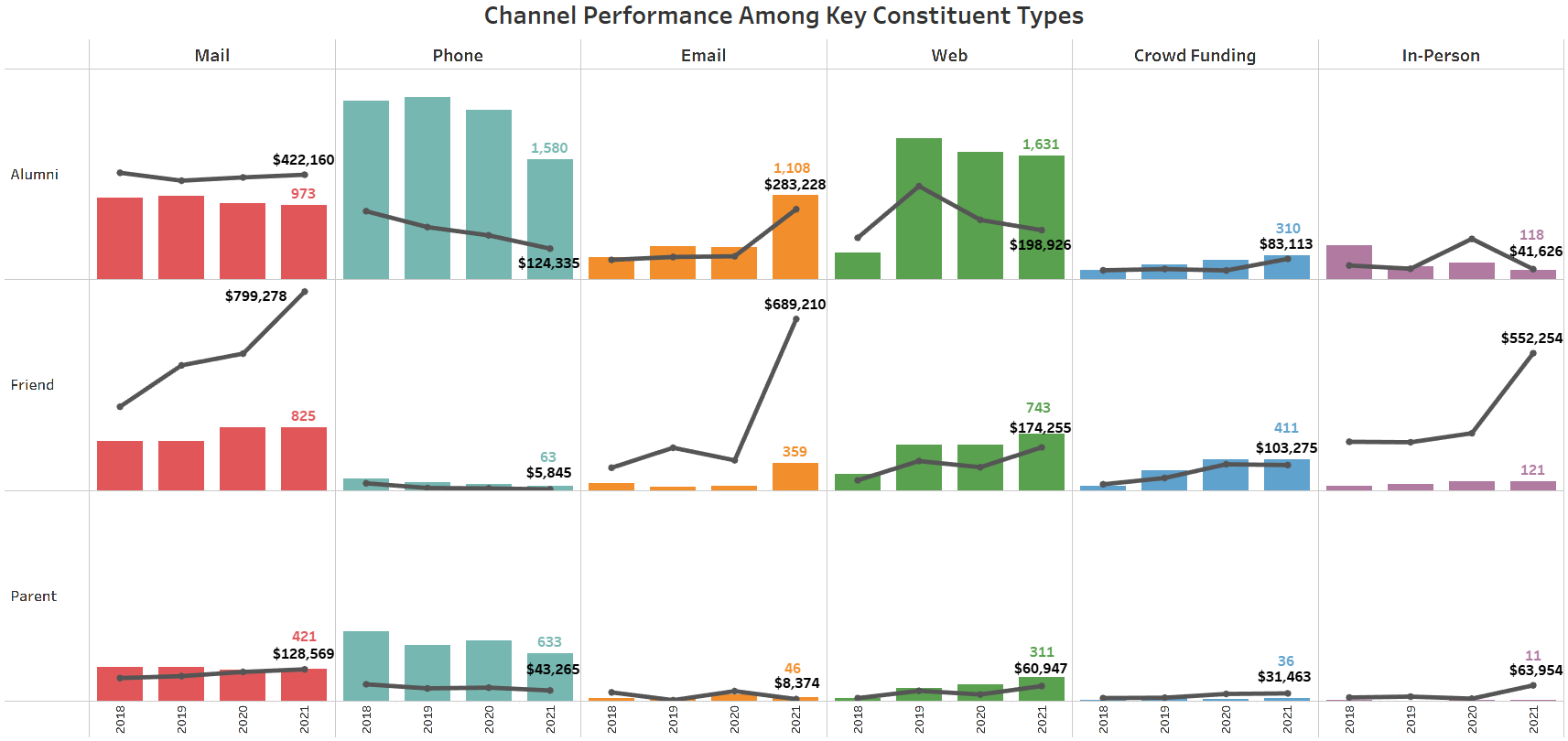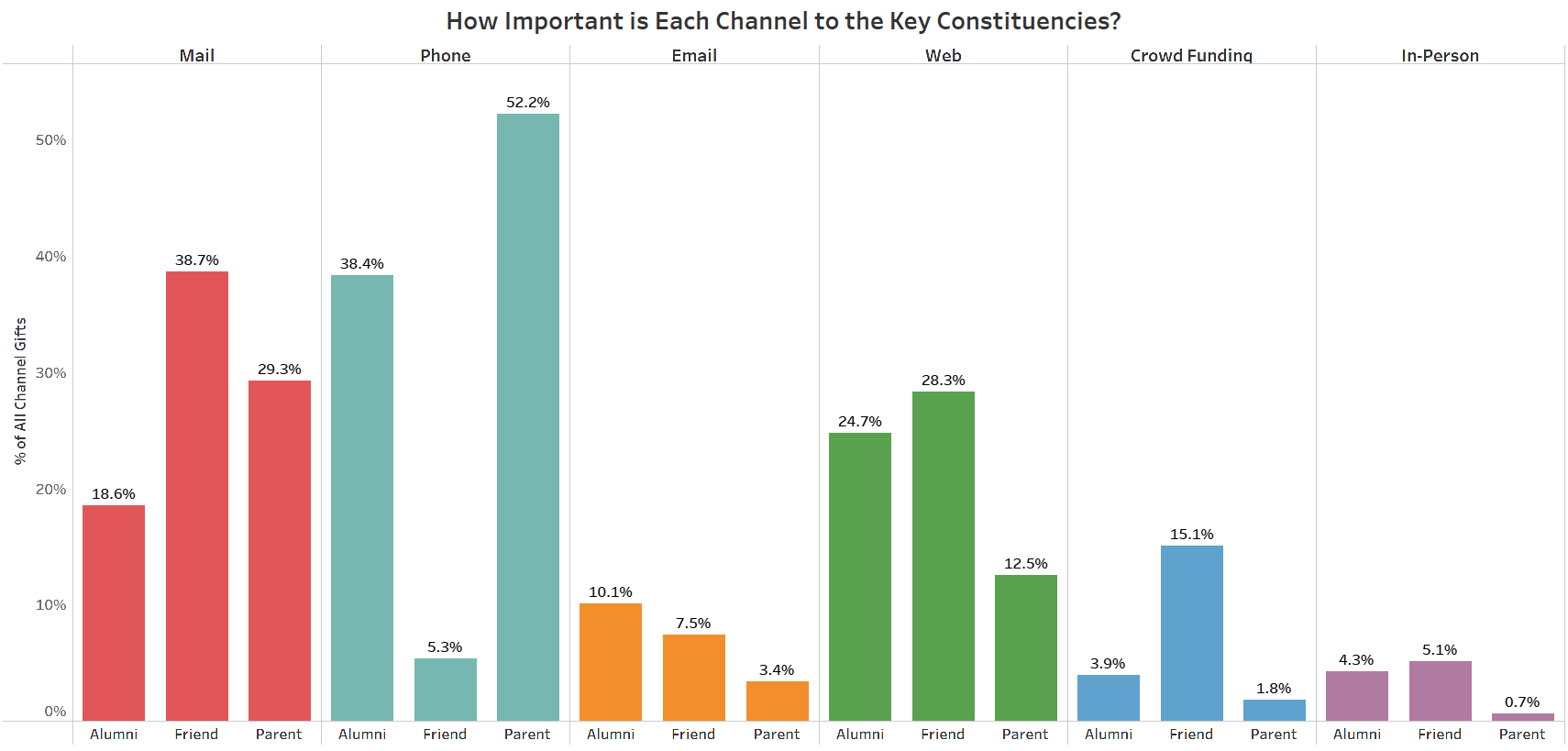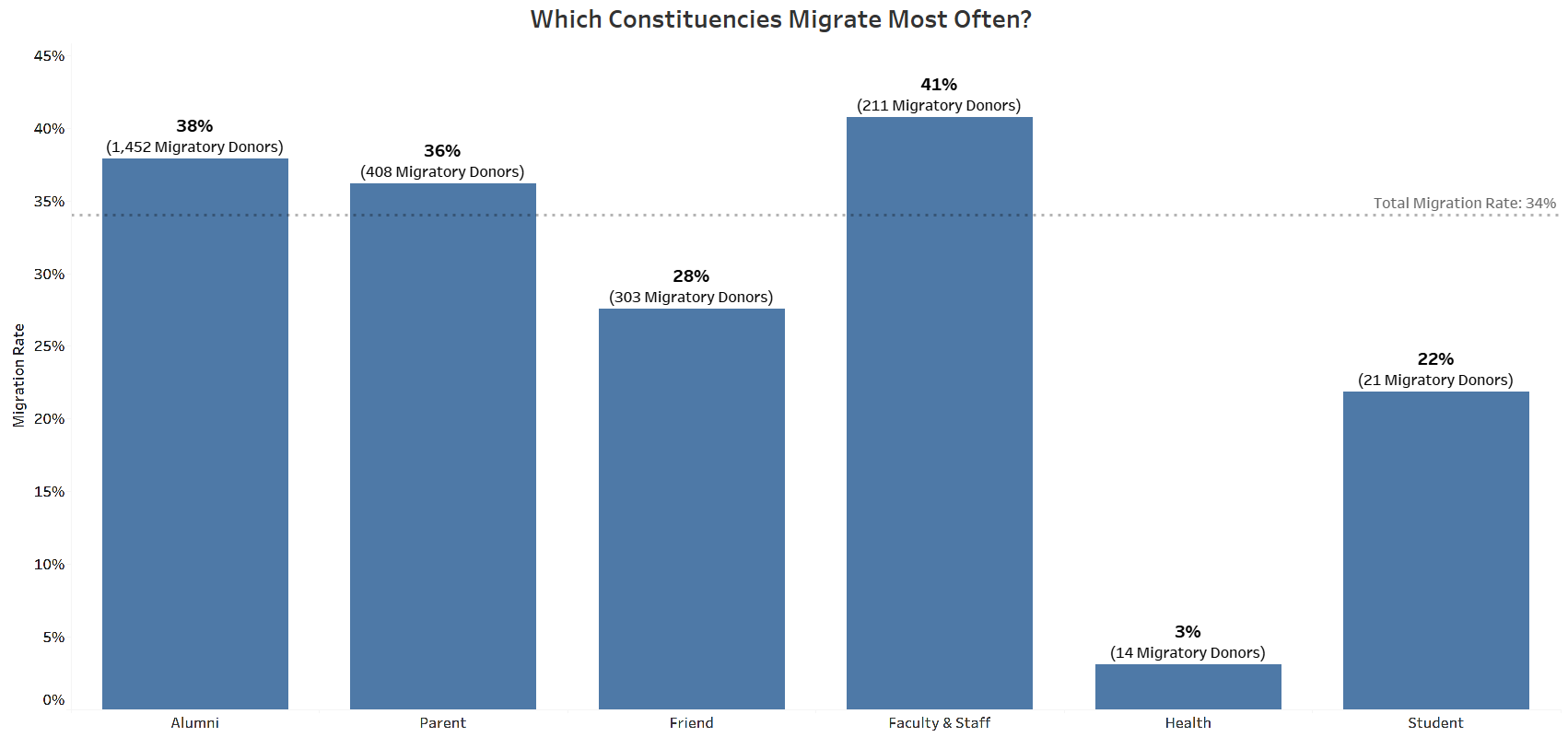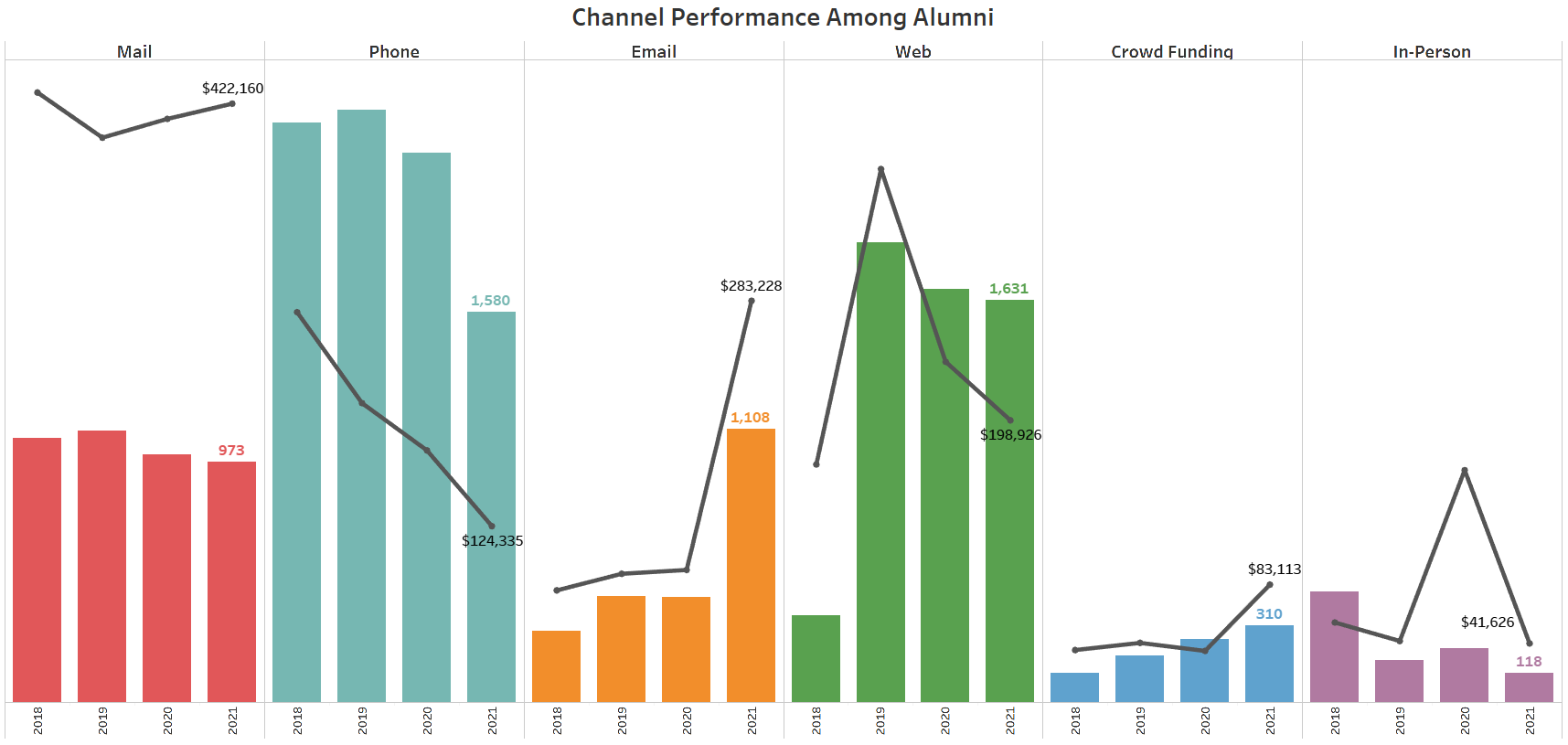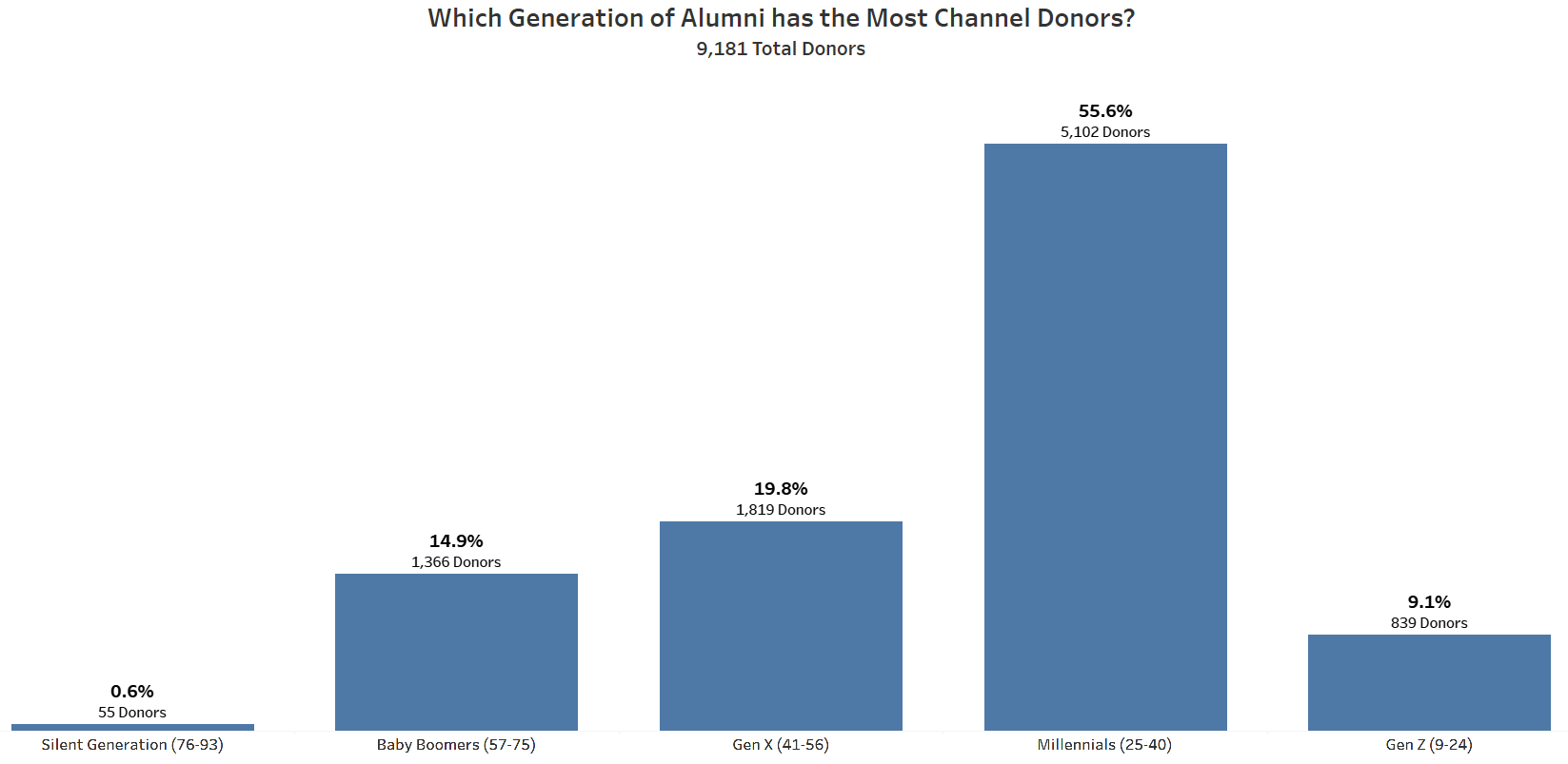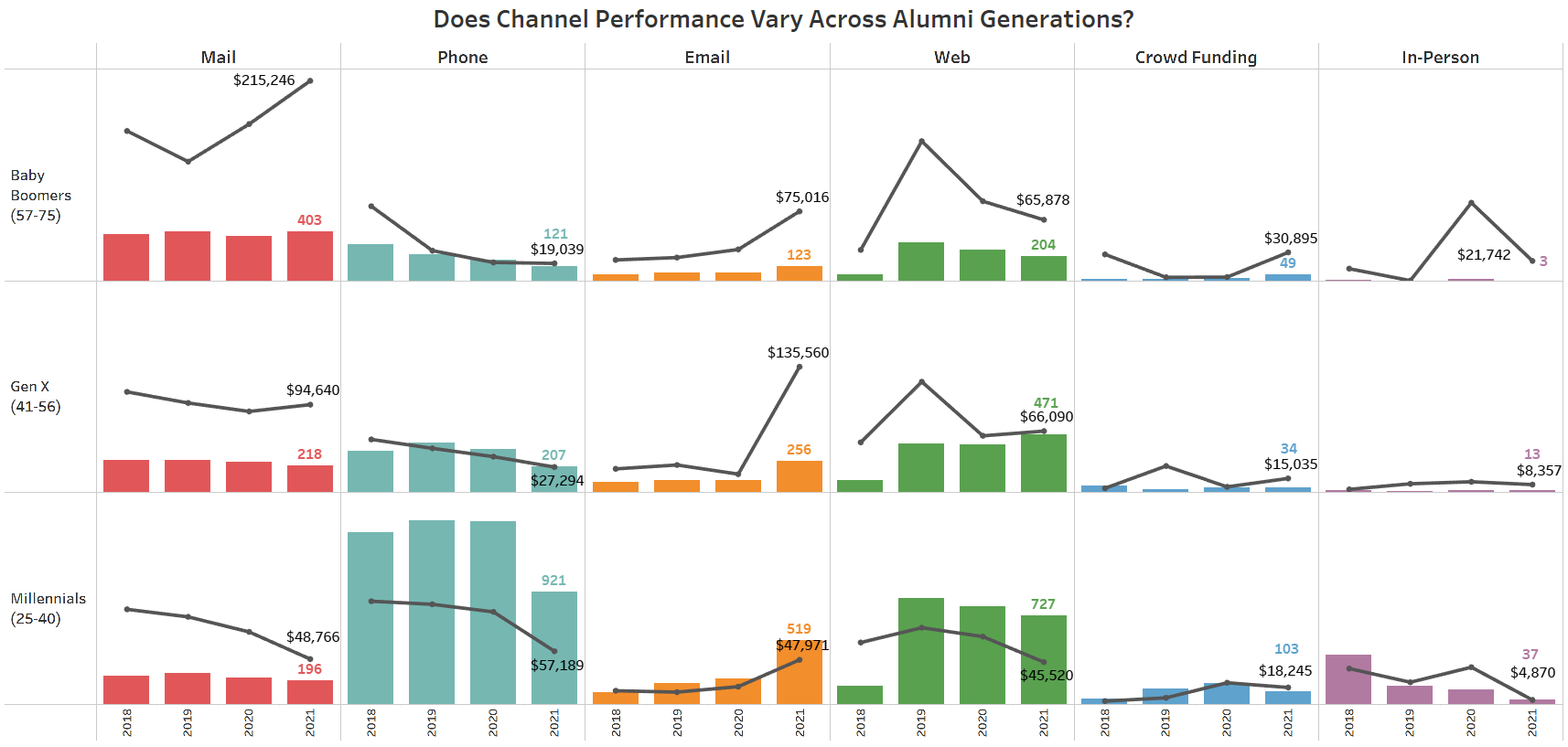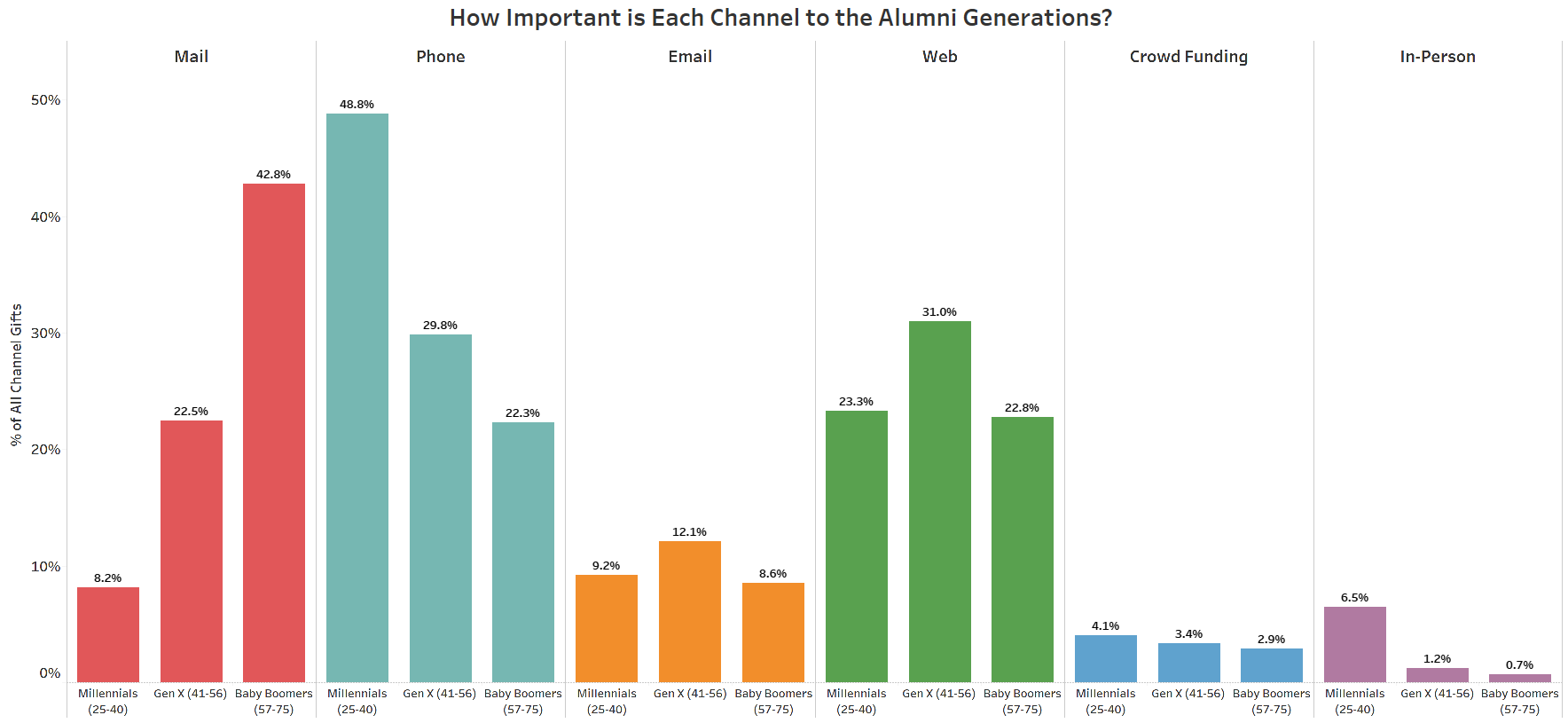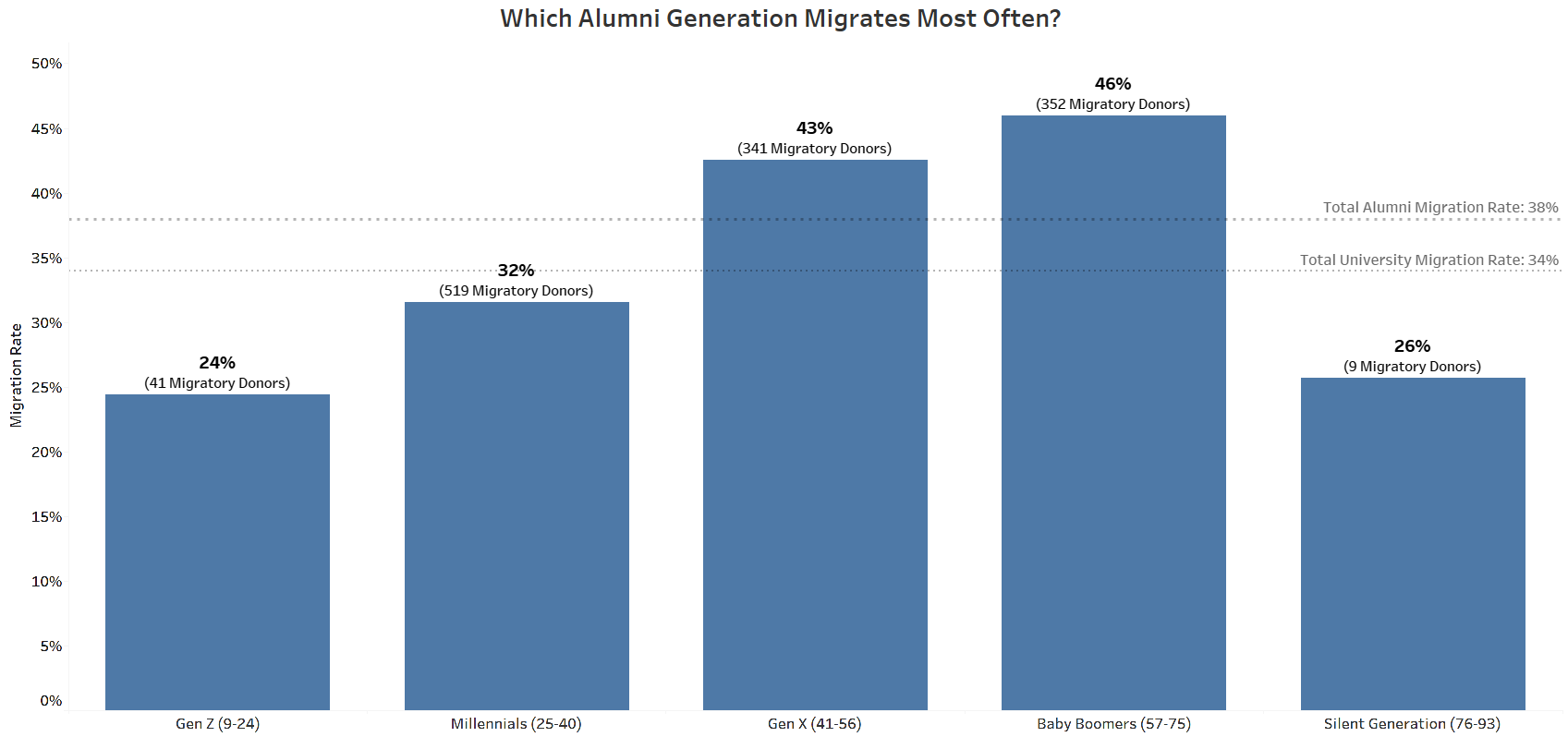Change the Channel, Let’s See What Else is On
An Analysis of Annual Giving Channel Usage
When I’m watching TV or listening to the radio, I’m a notorious channel flipper. A song or show I don’t like? No thank you, what else is on? The dreaded 1-877-kars4kids commercial? Not today, Satan. It drives my spouse nuts that I can’t just stick to one channel. However, when it comes to philanthropy, that’s exactly what I do. I prefer to give digitally through an organization’s website, time and time again, no matter the organization. Would I ever switch it up and give via the phone? Hard pass. How likely am I to send a check in the mail? About as likely as I am to win the lottery. Allow me to loosely paraphrase American revolutionary, Patrick Henry, “Give me web-based giving opportunities or give me death.”
Understanding the channel usage and preferences of your donors is key to successful fundraising efforts, particularly at the lower giving levels. If you are not asking your constituents to give in the ways that they like to give, you’re headed for disappointing returns on your direct appeals. If you can incorporate channel history and preference into your strategies, you may be able to not only lower your costs but also increase your revenue and come away with some big wins for your organization. Let’s explore this concept with our friends at Wossamotta U.*
*Wossamotta U is a fictional university whose most notable alumni are Rocky the Flying Squirrel and Bullwinkle J. Moose. As such, the data shown here is fictional, randomly generated and modeled to simulate real-world giving data.
Wossamotta U Channel Performance Overview
In general, analyzing giving channels makes the most sense at the “Annual Giving” levels. Major and Principle gifts are nearly all handled in-person with dedicated development officers. At the Annual Giving level, we’re looking at mass-communication with thousands of constituents. And while the dollar amount brought in via Annual Giving is important, it has nowhere near the impact that Major and Principle gifts do on the bottom line. At this level, participation and activity are more important than the dollar values.
At Wossamotta U, there are 6 main channels through which these lower-level gifts are made: Mail, Phone, Email, Web, Crowd Funding, and In-Person. Here we can see how each of those channels has performed in terms of activity (number of gifts) and revenue (cash value of those gifts).
With the exception of Phone, each channel has been bringing in more revenue each year. But remember, participation is what matters more at the Annual Giving level. Like revenue, Phone has been declining in terms of activity, however it still remains important as the 3rd most-used channel for Wossamotta U. Web and Email giving have exploded in their activity, likely the result of new campaigns tailored for those channels. Mail has remained steady in the number 2 spot for activity and has consistently brought in the most revenue.
Which Constituent Types are Giving via These 6 Channels?
Clearly, Alumni are a key donor group for the university. Over the past 4 years, essentially half of all the donors who gave via one of the 6 defined channels was an alum. Additionally, Friends and Parents are also important, and these three groups make up the key constituencies for Wossamotta U’s Annual Giving pool.
So how do these key constituent groups differ in their usage of channels? Do alumni give in the same ways as parents? What about friends, who generally have a less direct connection with the university?
Right away we can see some interesting trends and come up with some initial quick tips for university leadership:
- Phone is a hugely important channel for Alumni and Parent giving activity but is practically nonexistent among Friends.
Quick Tip #1: Drop Friends from the telemarketing campaigns, it’s a waste of time and resources.
- Web (and Email most recently) have come on fairly strongly for both Alumni and Friends but have been slower to develop for Parents who seem to prefer giving over the phone and through the mail.
Quick Tip #2: Develop your digital giving campaigns with Alumni and Friends in mind first, then prioritize adding in Parents only if they’ve expressed an interest in giving with these channels.
- Mail is a consistent, reliable channel for both activity and revenue.
Quick Tip #3: Newer isn’t always immediately better. Despite the rising importance of digital channels, don’t neglect the Ol’ Faithful that is direct mail fundraising. It’s not going anywhere. And in the case of Wossamotta U, it’s still their top revenue-producing channel.
A Wild New Metric Has Appeared!
We can explore these trends in another way by looking at a new metric I call “channel importance” which measures, how important each channel is to the key constituency groups (duh). Here, I define channel importance as the proportion of gifts that were made via a specific channel. For example, if one group gave all of their gifts via Email, the channel importance would be 100%. A perfectly even split across all 6 channels would have each channel with an importance of about 17%.
We can see more clearly now how important Phone is for Parents. Over half of the gifts made by Parents in the last 4 years have come in via phone. It’s an important channel for Alumni as well with nearly 40% of their gifts coming via Phone, while only 5% of Friend gifts are made with this channel.
Speaking of Friends, they prefer Mail, Web and Crowd Funding most with roughly 83% of their gifts coming via those 3 channels. Crowd Funding is only an important channel for Friends which makes sense because the whole purpose of that channel is to utilize peer-to-peer fundraising and reach a broader audience who are not directly connected to your institution.
Are Wossamotta U’s Donors Channel Flippers?
How frequently do donors to Wossamotta U give via multiple channels? To answer this, first let’s get some quick definitions down:
- Migration: The act of a donor giving via a new channel after previously giving via a different channel.
- Channel Donor: Anyone who has given at least 1 gift via one of the 6 aforementioned channels.
- Potential Migratory Donor: Anyone who has given at least 2 gifts via one or more of the 6 channels.
- Migratory Donor: Anyone who has given at least 2 gifts via at least 2 of the 6 channels.
Let’s break this down step by step. There are almost 21,000 Channel Donors. Of those folks, just over 7,000 have made two ore more gifts via one of the 6 channels. It’s important to distinguish this Potential Migratory Donor population from the broader Channel Donor group. If we want to measure how many donors use multiple channels, we first need to understand how many donors make multiple gifts to even have a chance at using multiple channels. That’s where the Potential Migratory Donors group comes in.
Now, to the actual group we’re focusing on: Migratory Donors. That red circle is pretty small. Of the 7,126 Potential Migratory Donors, only 2,409 donors migrate from one channel to another. Roughly 34% of donors who are eligible to use multiple channels actually do so, and 66% use the same channel for multiple gifts.
TLDR: Wossamotta U’s donors are largely one-time donors, but in the event that they do give multiple times, they use the same channel significantly more often than they change. Migration is rare, and donors follow the sage wisdom of TLC and stick to the channels (and lakes) they’re used to.
If we break down the rate of migration by constituency type, we can see a few patterns.
- Alumni are slightly more likely to migrate than the average channel donor, although I wouldn’t go building an entire campaign strategy around a 4% increase
- Parent migration rates are pretty close to the university average
- Friends seem less likely to migrate on average and may tend to stick to one channel. However, the population size of each group is starting to dwindle, and I personally would want to study the Friend group a little more before determining that they are truly less migratory.
- The results for the other constituency types, although significantly different from the average, should be taken with a several grains of salt. There are so few donors of these types that their migration rates are highly susceptible to a only handful donors behaving one way or another.
A Closer Look at Alumni Channel Giving
Because alumni are such an important group, let’s take a closer look at how they have been utilizing the 6 channels.
Even though I mentioned earlier that revenue is not the metric to focus on for Annual Giving, it’s hard to ignore the steep decline of revenue from the Phone for alumni. Activity is still pretty strong as the number 2 channel used by alumni, but the university will want to watch that revenue number closely before it dips too low, and it becomes more expensive than its worth to call alumni for donations.
Somewhat surprisingly, Web shows a bit of a decline since the initial boom in 2019. It would also be worth watching that trend into the future as well as monitoring Email performance to see if it follows a similar pattern after spiking in 2021. If Phone continues its decline university-wide, Web is poised to become the primary channel for alumni giving activity, so special attention should be paid to ensure that its future is viable. I would recommend a deeper dive into their Web campaigns to understand what is causing this downward trajectory.
How do Alumni Generations Differ?
We can dive even deeper into the alumni population by dividing them into generations. Do older alumni give in the same ways as younger alumni? Let’s find out!
First, we’ll explore the sizes of each generation. We can see that Millennial alumni, who are roughly aged 25-40, make up a considerable portion of our alumni donors. That’s promising as it suggests that Wossamotta U is introducing philanthropy to its alumni early. Gen-X and Baby Boomer alumni, who are roughly aged 41-75 collectively, also make up sizeable portions of the donor population. There are relatively few alumni at the extremes (the Silent Generation and Gen Z) which makes sense.
Millennials, Gen X, and Baby Boomers are the key alumni constituencies we’ll focus on based on their size as well as their age and likely philanthropic maturity. Millennial alumni are still early in their careers, so they probably won’t be bringing in the big bucks, but it’s important to establish a pattern of philanthropy and keep them engaged with the university after graduation. The Gen X and Baby Boomer alumni are in their prime stages of life for philanthropy. They are likely well established in their careers or even retired and may also be empty nesters whose children have moved out and started their own families. These groups are likely to have the most disposable income for philanthropy. So how do these 3 generations utilize the channels?
A couple things stick out to me immediately with this chart. Let’s start with Millennials. Their Phone activity is huge and does not show the same pattern of decline that we’ve seen more broadly at the university. That’s pretty surprising given the stereotype around Millennials (i.e., that we’re afraid of talking on the phone). A little truer to our preconceived notions, the digital channels of Web and Email have come on as solid number 2 and 3 channels for Millennials. Also worth noting is that the revenue from Mail is in a steady decline. If Wossamotta U is looking for ways to cut costs, they could limit their direct mail appeals to these younger alumni.
On the older end of the spectrum we have the Boomers. Revenue from Mail has been skyrocketing over the past two years, and the channel’s activity has been number one for the generation for all four years. Phone activity and revenue are in steady decline for the Boomers, which is somewhat surprising, at least when compared to the younger alumni groups.
Gen X alumni have a slightly more even distribution of activity among the channels. Web appears to be their channel of choice, and Email, Phone and Mail all have pretty similar numbers in terms of activity. Similar to the Millennial alumni, Gen X Phone activity shows a slower decline than the university at large. However, unlike Millennials, their Web activity has stayed steady and even grown since its initial spike.
If we look at the channel importance metric for these generations, we find very interesting patterns. Mail and Phone importance are mirror images of each other. Mail becomes increasingly more important as the generations get older, while Phone moves in the exact opposite direction being more important to younger alumni.
The other pattern that sticks out to me is that Web and Email are more important to the middle generation, Gen X, than either the Millennials or Boomers. Nearly 1/3 of all the Gen X gifts for the past 4 years have come in via the Web channel, while that measure is closer to 1/5 for Millennials and Baby Boomers.
In the extreme hypothetical world where we are only allowed to use one channel for each generation, it’s pretty clear that Baby Boomers are getting Mail, Gen X will be asked via Web, and Millennials will be contacted via Phone. Fortunately, the real world is not so absolute, and we can adopt multi-channel strategies for our donors. However, these are some pretty considerable patterns which need to be considered for future solicitation plans at Wossamotta U.
Migratory Rates Among Alumni Generations
We’ve seen that the different generations prefer different channels to make their gifts. And we know that migration is relatively rare for the university as a whole. How do the generations feel about sticking with a single channel?
As a reminder, all donors have a migration rate of only 34%, and alumni migrate slightly more often at 38% of the time. Here we can see the Baby Boomers and Gen X both migrate significantly more often than their peers both within the alumni generations and within the university at large. Millennials are somewhat less likely to migrate than the average Wossamotta U alum and are closer to the university average. While it appears that nearly half of all Baby Boomer and Gen X alumni are open to moving between channels, it’s important to consider the population sizes with these rates. Fewer than 700 of these alumni have used more than 1 channel over a 4-year span. I would suggest that the university continue to track this measure and see if these numbers change with more time and data.
Lessons Learned
So, what did we learn, and what can we tell the leaders of Wossamotta U?
- Channel migration is rare. Donors to the university tend to stick with the same channel for subsequent gifts. When soliciting a donor for renewal, it will be important to prioritize their last-used giving channel.
- The different constituency groups have demonstrated distinct giving patterns and channel preferences in recent years. These different patterns and preferences should be strongly considered when building the solicitation pools for future campaigns.
- Mail is still a very viable channel in terms of both revenue generation and giving activity. However, younger alumni appear to be less interested in making gifts via Mail, and their inclusion in direct mail solicitations should be limited.
- Phone is generally in a steady decline but may have a prolonged future as a channel primarily for younger alumni. However, it will be crucial to monitor Phone’s diminishing revenue compared to the costs of running a call center.
- The two digital channels, Web and Email, show considerable promise for the future of revenue and activity for nearly all groups across campus, but their activity and revenue has been somewhat erratic in the past 4 years. More research should be done on the specific campaigns utilizing these channels to determine ways to increase consistency in the results.
All in all, Wossamotta U’s donors tend to choose a channel and stick with it. But the different donor constituencies and their unique channel preferences demonstrate the need for a nuanced approach to annual giving solicitations. Wossamotta U now has the insights and data to build such a nuanced strategy for their appeals and as a result should expect to see better returns moving forward.
